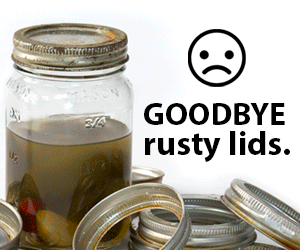As someone who loves to cook and experiment with new recipes, I understand the importance of having fresh ingredients on hand. However, as we all know, fresh produce doesn’t always last very long. That’s where food preservation techniques come in. By using simple methods, we can extend the shelf life of our favorite fruits and vegetables and even meats and dairy products.
Basic Food Preservation Techniques
Home food preservation has been practiced for centuries, and with good reason. Not only does it help us save money by reducing food waste, but it also allows us to enjoy seasonal produce year-round. Whether you’re a beginner or an experienced home cook, learning some basic food preservation techniques is a valuable skill that can benefit you and your family for years to come.
In this article, I’ll be sharing some simple methods for preserving food that you can easily try at home.

Understanding Food Preservation – Basic Food Preservation Techniques
Science of Food Preservation
Preserving food is the process of extending its shelf life by preventing spoilage, bacterial growth, and other forms of degradation. The science behind food preservation involves understanding the factors that contribute to spoilage, such as pH, oxidation, and microbial growth. By controlling these factors, we can slow down or prevent spoilage and maintain the quality of the food.
Importance of Food Preservation
Food preservation is important for several reasons. It helps to reduce food waste by extending the shelf life of perishable items. This is especially important for seasonal foods that may only be available for a short period of time. Preservation also allows us to enjoy traditional foods year-round and can be a cost-effective way to stock up on food during times of plenty.
Traditional and Modern Techniques
Food preservation techniques have been used for centuries, with traditional methods such as smoking, drying, and salting still in use today. Modern techniques include refrigeration, pasteurization, irradiation, and pressure canning. Each technique has its own benefits and drawbacks, and the choice of method will depend on the type of food being preserved and the desired outcome.

Role of Temperature
Temperature plays a critical role in food preservation. High temperatures can kill bacteria and other microorganisms, while low temperatures can slow down their growth. Proper temperature control is essential to prevent spoilage and maintain food quality. Refrigeration and freezing are two common methods of temperature control.
Dealing with Air and Moisture
Air and moisture are two other factors that can contribute to spoilage. Airtight containers can help to prevent the growth of bacteria and other microorganisms while removing moisture from food can prevent the growth of mold and other fungi.
Understanding Food Quality
Preserving food can affect its quality in terms of texture, flavor, and nutritional value. The use of spices and other flavorings can help to enhance the taste of preserved foods, while proper preservation techniques can help to maintain the nutritional content of the food.
Preserving Different Types of Food
Different types of food require different preservation techniques. For example, meat can be preserved through smoking or canning, while vegetables and fruits can be dried or pickled. Understanding the best preservation techniques for each type of food is essential to maintaining its quality and preventing spoilage.
Food Preservation Equipment
There are several types of equipment that can be used for food preservation, including canning equipment, jars, lids, and food dehydrators. Each type of equipment has its own benefits and drawbacks, and the choice of equipment will depend on the type of food being preserved and the desired outcome.

Safety Measures and Tips
When preserving food, it is important to follow safety measures and tips to prevent the growth of pathogenic organisms. The National Center for Home Food Preservation provides helpful resources and guidelines for safe food preservation.
Preservation Techniques Explained
There are several preservation techniques that can be used to extend the shelf life of food. These include canning, freezing, drying, smoking, pickling, and fermenting. Each technique has its own benefits and drawbacks, and the choice of method will depend on the type of food being preserved and the desired outcome.
















One Response